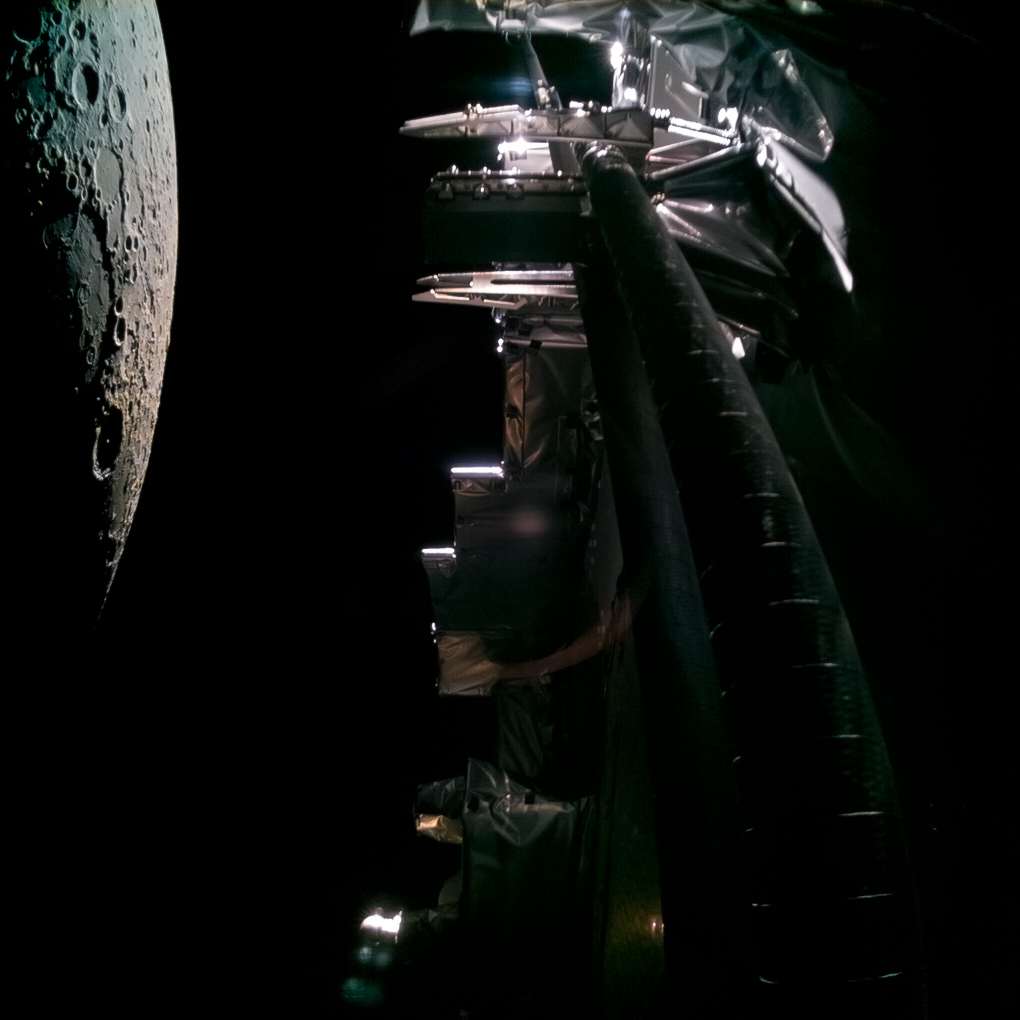The European Space Agency’s JUICE mission is on its way to Jupiter, but to get there it needs some help in the form of multiple gravity assists as it flies by various planets. Yesterday it successfully completed its first flyby, but it was not your standard gravitational assist maneuver. For the first time ever, a spacecraft used two celestial bodies in rapid succession to change its speed, and it was the first-ever flyby of the Earth and the Moon.
The first half of the lunar-Earth flyby was carried out on Monday, August 19, with Juice snapping some amazing photos of the Moon as it went by. Yesterday it successfully completed the second leg, the flyby of Earth, sending more photos of our pale blue dot home.
JUICE and the Moon right after the historic flyby on August 19, 2024.
Image Credit: ESA/Juice/JMC ACKNOWLEDGEMENTS Simeon Schmauß & Mark McCaughrean
JUICE needs to be traveling pretty fast to get to Jupiter but the lunar-Earth gravitational assist (LEGA) actually slowed the spacecraft down to put it on a Venus-bound trajectory. Once there it will get the initial substantial speed boost it needs, using the plenty for another gravity assist in August 2025. It will then be followed by two flybys of Earth, one in September 2026 and a final in January 2029. It is due to reach Jupiter and its icy moons in 2031.
It was a daring maneuver but it saved JUICE a lot of fuel; so much so that it’s actually opened up the possibility of carrying out a much closer study of Ganymede, the largest Moon of Jupiter, and the ultimate object of study of the mission.
Earth snapped by Juice as it carried out a flyby on August 20, 2024.
Image Credit: ESA/Juice/JMC Simeon Schmauß & Mark McCaughrean
While the focus of this maneuver was to get into the right orbit at the right speed, the LEGA allowed the team to take the pictures of the Moon and Earth as well as test out some instruments that could not have been tested in realistic space conditions before.
“The timing and location of this double flyby allow us to thoroughly study the behaviour of Juice’s instruments,” Dr Claire Vallat, Juice Operations Scientist, said in a statement.
“It happens early enough in Juice’s journey that we can use the data to prepare the instruments for arrival at Jupiter. And given how well we know the physical properties of Earth, the Moon, and the surrounding space environment, it’s also the ideal location to understand how the instruments respond to a real target.”
More high-resolution photos of the Moon and Earth taken by Juice’s scientific camera, JANUS are expected to be downlinked and shared in the coming weeks.
Source Link: ESA’s JUICE Has Been Successfully Deflected Toward Venus
